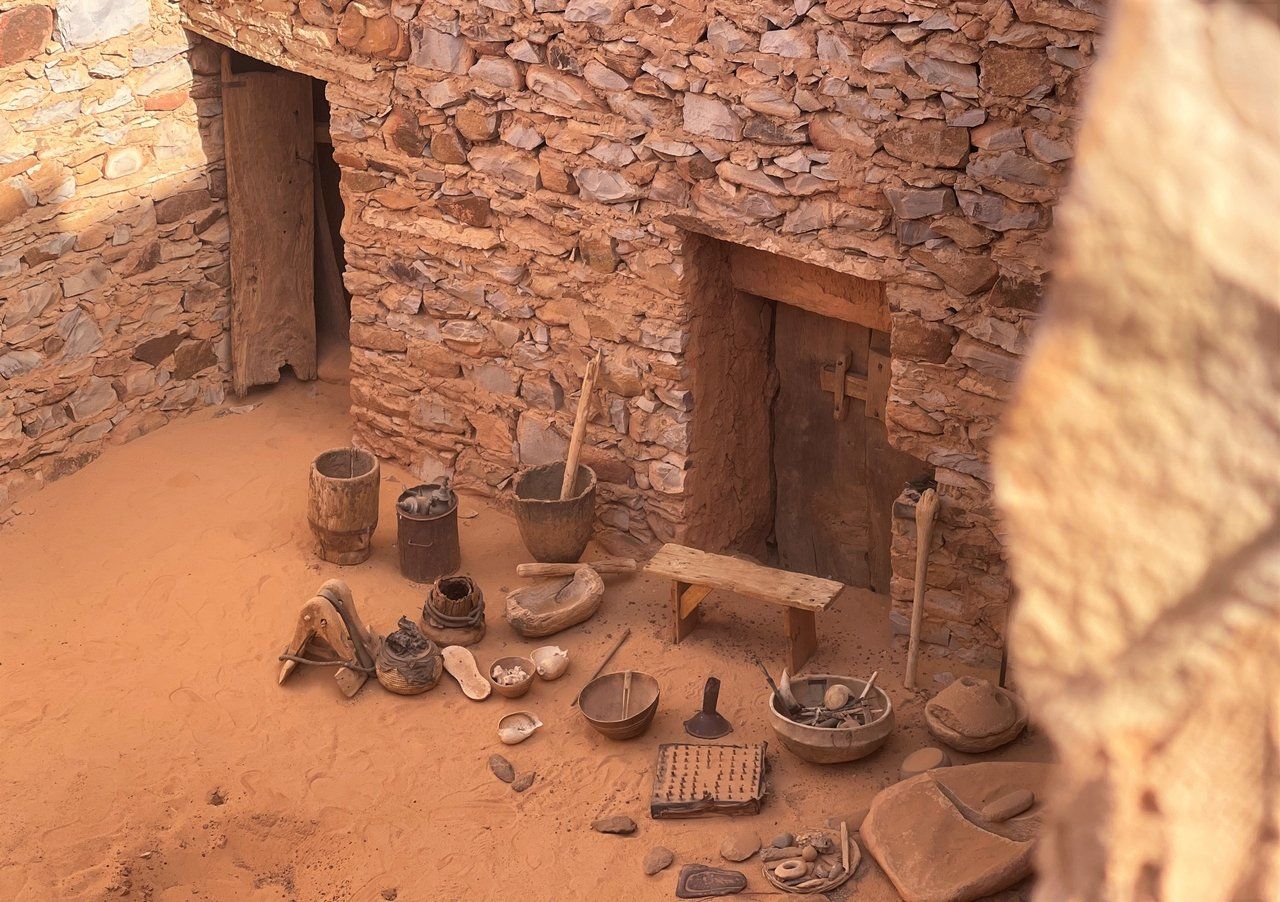Once one of the most important trading cities in West Africa, you can't even find Aoudaghost on Google Maps today. Instead, it's Tegdaoust that you have to search for to get to the location of the former metropolis. Well, challenge accepted. It's worth the effort, anyway; Aoudaghost is home to the ruins of one of the country's most historically significant cities. The town's heyday and decline were closely linked to the development of the Ghana Empire. Wars and the flourishing of new cities such as Oualata led to Aoudaghost's loss of importance. It was not until 1927 that the site could be located again and extensive excavation work began. In addition to relics of various settlement phases, graves from pre-Islamic times and even prehistoric rock drawings were discovered. It is hardly surprising, then, that Mauritania is seeking UNESCO World Heritage status for the ruined city. The nearest town is Tamchekett, 35 km away. Aoudaghost is scheduled as an optional stop on one of our southern tours. It is a good idea to drive to the ruins on the way between Ayoun el Atrous and Kiffa. One or two additional days should be planned for this. An overnight stay on site in the open air is possible without any problems. Similar destinations in Mauritania's south are Koumbi Saleh and Ksar el Barka. The old town of Ouadane in the Adrar region is also absolutely worth seeing for visitors interested in history.





Aoudaghost has its best days long behind it. To be more precise: Centuries behind it. But few cities can claim to have had such an eventful history as the former metropolis of the West African Ghana Empire (also: Wagadu).
Rock paintings prove that the history of the place began before our era. The city as such was probably founded by the Lamtuna, a tribal group of the Sanhadja Berbers, between the 5th and 7th centuries. Originally an independent market town, Aoudaghost was probably conquered by the Soninke in the 10th century and came under the influence of the Ghana Empire. Similar to Oualata later, the town represented a link between the Maghreb and the black African south. At that time, trade routes ran from Taghaza, now Mali, to Sidschilmasa, Morocco. It is believed that Aoudaghost at times represented the most important West African trading center in the trans-Saharan trade. The trade of gold, slaves, and perhaps salt made the city wealthy. Thus, the Islamic geographer al-Bakri described Aoudaghost as a place full of date palms and fig trees. A city where cucumbers and grapes were grown, sheep and cattle were raised, and wheat fields could be irrigated. But such wealth aroused desires, and so the heyday of Aoudaghost is closely linked in time to its decline.
At that time, the Ghanaian empire was mainly threatened by the Berber dynasty of the Almoravids, who finally conquered Aoudaghost around 1054 under Ibn Yassin. If a conquest does not automatically mean final decline, this was probably the case in Aoudaghost. It was not least the rise of Oualata that led to the permanent decline of the old metropolises of Aoudaghost and Koumbi Saleh. Descriptions from the 12th century make the place appear only as a village. Finally, in the 17th century at the latest, it was completely abandoned.
It took more than 250 years until a French lieutenant armed himself with medieval Arabic writings and found the ruins of Aoudaghost in 1927. The "Schliemannian" Troy method apparently did not fail to have its effect in Mauritania. Earliest finds were glazed pottery and jewelry. Later French excavations in the 1960s and 1970s discovered several phases of settlement between the 7th and 11th centuries. Graves from pre-Islamic and even petroglyphs from pre-Christian times were also found.
Today the excavation site is still clearly visible. The artificial mound extends over 12 hectares. Layered sandstones, remains of columns, shards of ancient pottery and traces of metal can be examined on site. Nearby, there are cave paintings dating back thousands of years. In 2001, Mauritania put Aoudaghost on the UNESCO tentative list, along with Koumbi Saleh and Azougui. Perhaps one day they will have the same significance as the Ksour Chinguetti, Ouadane, Tichitt and Oualata, which have already been declared World Heritage Sites.
Aoudaghost is secluded. It is over 100 kilometers to the next paved road, the Route de l'Espoir. The next largest town is Ayoun el Atrous, 120 kilometers away on sand runwas. No one comes here by chance, but it is worth it, because between nomads, oases and impressive natural scenery, the journey can also be part of the reward. If desired, we can easily include Aoudaghost in our southern tours. We recommend a one-day stay with a possible overnight stay in the open.